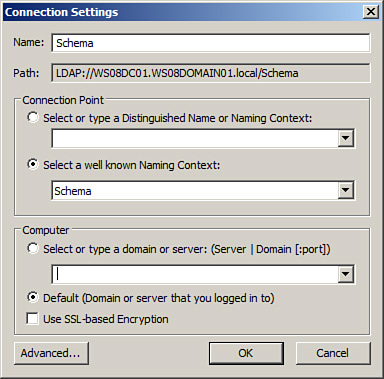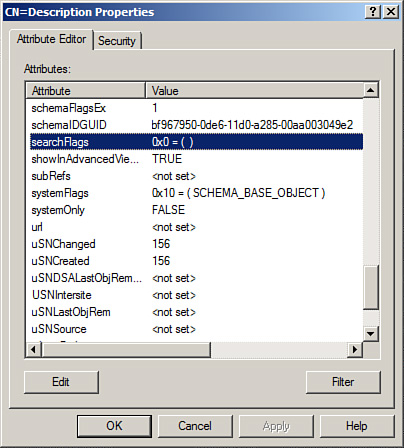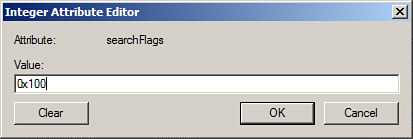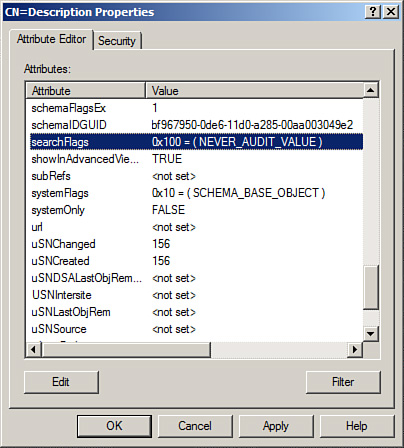Exclude an attribute for directory service auditing.
To exclude an attribute for directory service auditing, perform the following steps:
1. | Log on to a domain controller or a member computer that has Windows Server 2008 RSAT installed.
|
2. | Click Start, click Run, type ADSIEdit.msc, and then click OK.
|
3. | In the ADSI Edit console, on the Action menu, click Connect To.
|
4. | On the Connection Settings page, shown in Figure 1, type Schema in the Name field, select Schema from the drop-down list under Select a well known Naming Context, and then click OK.

|
5. | In the console tree, select the Schema node.
|
6. | In the details pane, right-click the attribute you want to exclude from directory service auditing; then click Properties.
|
7. | On the Object Properties page, shown in Figure 2, select the searchFlags attribute and then click Edit.

|
8. | On the Integer Attribute Editor page, shown in Figure 3, type 0x100 into the Value field and click OK.

|
9. | In the Object Properties page, the value for the searchFlags attribute is changed to 0x100 = (NEVER_AUDIT_VALUE), as shown in Figure 4. Click OK to close the Object Properties page.

|